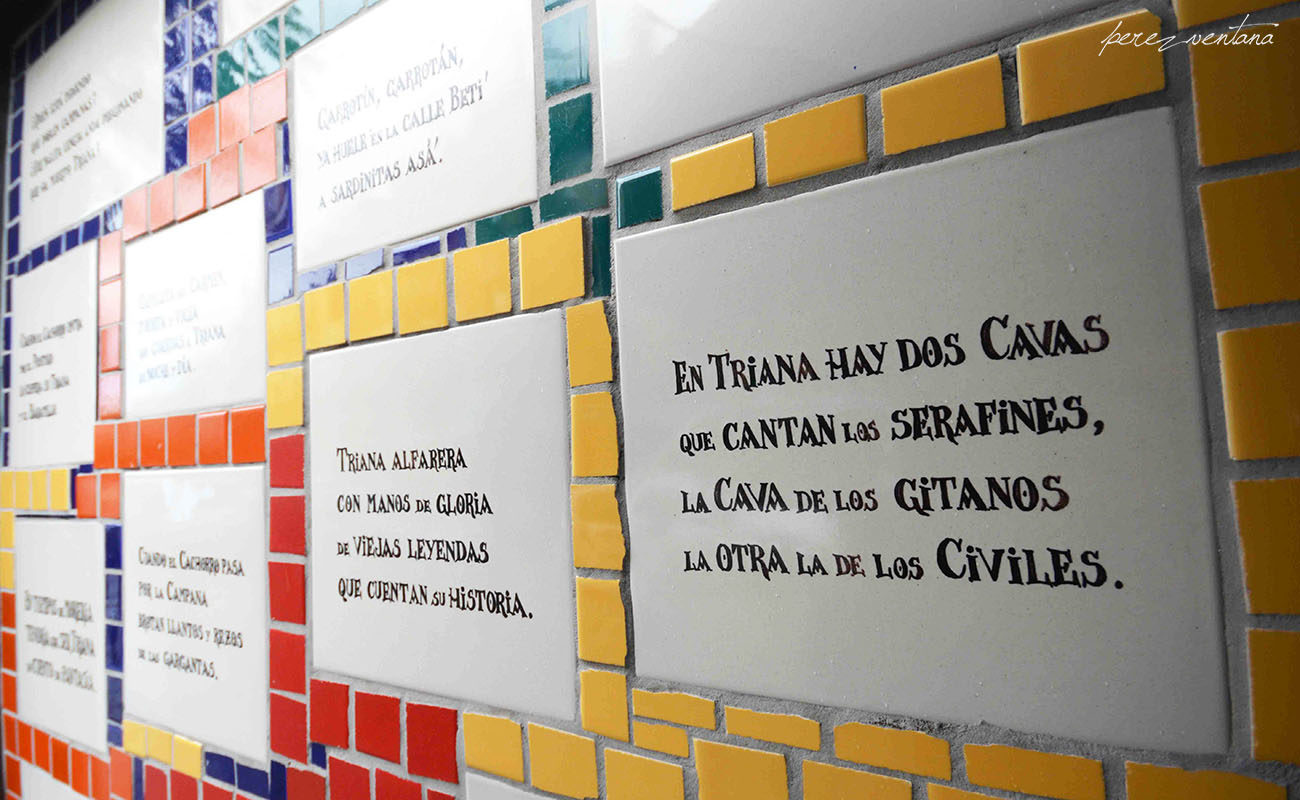Grandpa and Triana’s cante
The potters of Triana had their own way to measure the verses, and they weren’t virtuosos, not at all. I mean those who left recordings behind, such as Emilio Abadía, Manuel Oliver, El Teta, Manolito el Pintor, Domingo el Alfarero and El Arenero.

-Grandpa, is it true that the cante por soleá sung by the potters of Triana doesn’t have rhythm, like some flamencologists say?
-Cante’s rhythm, its compás, depends on the singer’s rhythm. The potters would sing in their spare time in the taverns, usually without guitar, keeping the rhythm by knocking on a table or the bar’s counter, with their bare knuckles. I’m sure they managed to fit the verses in, just fine.
-But did they sing a compás or not, grandpa?
-They had their own way to measure the verses, and they weren’t virtuosos, not at all. I mean those who left recordings behind, such as Emilio Abadía, Manuel Oliver, El Teta, Manolito el Pintor, Domingo el Alfarero and El Arenero. They didn’t have a keen sense of rhythm. Yet, Pastora Pavón recorded those cantes with a perfect rhythm. Same with Mairena.
-Pastora?
Yes, kid. Pastora. “Con la tierra echá en la cara“, that’s a cante del Zurraque, not a cante de La Cava.
-Weird, huh?
-Not weird at all, because the Pavón family lived on Castilla Street, same Street as Garfías, who was a master of these cantes, those of Ramón el Ollero, El Pancho, La Gómez and El Quino Lorente. Also, part of Pastora’s family lived in Triana, so she would have heard those cantes many times.
-In Triana people say that Antonio Mairena didn’t sing those cantes well, what do you say about this?
-Nonsense.He sang them well, and a compás, particularly the styles of Noriega and Pinea el Zapatero, two aficionados of the 19th century.
-Yet he wouldn’t have the feel, the dejillo, of Zurraque, grandpa.
-That’s something else, because he wasn’t from Zurraque. Just as one singer from Triana cannot have the dejillo of Alosno, when singing a fandango de Alosno, if you know what I mean. Yet we are talking about singing well, not about perfumes and aromas, which are two different things
-What about Tomás Pavón?
-Tomás cante was more like what they sing in Cádiz, he liked the “long” style of El Mellizo, and Frijone’s tirao. He also recorded the cantes de Alcalá in his own way, extending and linking the verses. His father-in-law, Antonio Bermúdez El Baboso, cantaor, could have taught him some cantes, although there isn’t any proof of that. I’m on it, trying to figure out how well Tomasito and his father-in-law knew each other.
-They also say that Tomás didn’t sing well the cante de Alcalá.
-Nonsense.The thing is that Tomás would extend the verses, because he could, and the cante de Alcalá is short, as performed by Joaquín el de la Paula, a singer that apparently didn’t have much breath. He also sang out of tune, because he was a bit deaf.
-But Joaquin created at least four cantes, right?
-According to his son Enrique, who sang soleás very well, his father only created one cante. If his son said that, that’s probably true, because Enriquillo knew a lot about cante. The remaining styles of Alacá were created by other people.
-Didn’t Juraco had his own style of soleá?
-Certainly. Even La Roesna, who only sang in her own home, had her own style of soleá. So much so Juraco, an artist, a musician who was admired even by Silverio Franconetti. Saying otherwise is rubbish. The thing is that Mairena said that all the styles of soleares from Alcalá were traditional Gypsy styles, and no one contradicts Mairena.
-So, to conclude, who polished the potter’s cante?
-Well, to be fair, those styles began to reach the general public when they were sung by Naranjito, Chiquetete and Paco Taranto.
-Chiquetete, grandpa?
-Yes, Antonio Cortés Pantoja Chiquetete. He recorded these cantes, and that’s when many other cantaores got interested in them. Yet I think that it has been Paco Taranto who has done these cantes really well, with that unique style of his. Remember that he is the only famous cantaor who was actually born in Zurraque, and he would have listened to all these cantes in the tavern of Joaquinito Ballesteros and other taverns in the neighborhood. But the first one to make those cantes known was Ramoncito el Ollero, born in the middle of the 19th century. He sang in the cafés and parties of Seville, and it was him who made known these cantes outside of Triana. Yet, there isn’t even a plaque to his memory on the house he was born, on Procurador Street.
-I never cease to be amazed by how much you know about cante, grandpa.
-I know a lot because I’ve lived a lot. I’m just old. Cante is my life, don’t you ever forget this. No one can know about cante unless they’re obsessed with it, like I am.
* This article was originally published on March 25th, 2016




